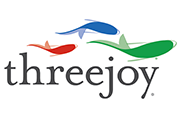After finishing up a post over at Big Beacon on Educating Wholehearted Engineers & Educators (here), I was reflecting about the notion of vulnerability and the ways in which we are vulnerable both publicly and privately. To summarize, the blogpost was a riff on Brene Brown’s Power of Vulnerability video (here) and the ways in which our willingness to be vulnerable–to be open & honest in the face of uncertain response–is a key to educational reform. Here, I’d like to make a distinction between public vulnerability and private or personal vulnerability.
Public Vulnerability
One thing I’ve noticed in my work with faculty and students as well as in my coaching practice is the ways in which public steps of vulnerability appear to be relatively easy to take. A key to such ease is given by Don Migel Ruiz in his book The Four Agreements. The second agreement is key in situations like this and it states, “Don’t Take Anything Personally.” This agreement is useful in a number of ways, but the sense that it is helpful in being publicly vulnerable is captured by Ruiz in the following passage:
If you keep this agreement, you can travel around the world with your heart completely open and no one can hurt you. You can say, “I love you,” without fear of being ridiculed or rejected. You can ask for what you need. You can say yes, or you can say no — whatever you choose — without guilt or self-judgment. You can choose to follow your heart always. Then you can be in the middle of hell and still experience inner peace and happiness. You can stay in your state of bliss, and hell will not affect you at all.
Ruiz, Don Miguel (2010-01-18). The Four Agreements (Toltec Wisdom Book) (Kindle Locations 622-625). Amber-Allen Publishing. Kindle Edition.
In this way, we can stand up, make public declarations straight from the heart, and be relatively free from fears of anonymous others and what they might think.
Personal Vulnerability
In personal relationships, a shift in language and growing willingness to be vulnerable with others also has an effect. In the forming of new relationships, it seems as though vulnerability attracts those willing to be vulnerable. Clients report that when they are willing to be more open that they attract those who are themselves willing to be vulnerable and this is, to them, a blessing undisguised.
Of course, existing relationships can pose additional complications, however, because a shift in language and vulnerability can be discomfiting to old friends and loved ones. Your willingness to “open up” is no guarantee that those close to you will be able to do so. Moreover, this vulnerability gap can be quite irritating. Your gremlin says “Don’t these people know how hard it is for me to be open like this? Why can’t they just dig it; why can’t they reciprocate and dare to be vulnerable themselves.” Our tendency to reciprocate is a fairly deep biologically based response (here), but this is not the whole or even most of this story.
Attachment and the Personal
Our difficulty with newfound personal vulnerability with existing friends and loved ones stems, I think, from our personal connection with the person, and “not taking anything personally” with someone with whom we have a connection is harder than with someone we don’t know very well. Both are difficult, but our attachment to the friend is the greater. Clearly the choices we face with the friend are the same as those we face with an anonymous public. We can be authentic and vulnerable–risking the vulnerability gab with the person–or we can vulnerability match with the person–be vulnerable unto them as they are able to be unto us.
Personal Integrity & the Relationship
The integrally aligned solution would suggest two thing: (1) being vulnerable yourself to the extent necessary to be authentic in context with the friend and (2) concern for the relationship as you make your way on your vulnerability journey. Let’s look at each one of these.
As one moves from fear of openness to wholeheartedness and vulnerability, authenticity requires alignment between interior and exterior to the extent necessary in the context of the relationship. This is not carte blanche to dump all the crazy new thoughts you are thinking or what we might call gratuitous vulnerability. It suggests an intelligent approach to sharing and being vulnerable to those close to you in a manner they can accept and adjust to. This suggests concern for the other person and the relationship and not assuming the person understands the changes you are going through without communication. It also requires you to communicate your new, increased willingness to be vulnerable in ways the person can understand.
Over time, this new way of being in the world becomes your new normal, and living wholeheartedly with greater joy and less fear the payoff for the risk you took by opening up. In this sense, a willingness to be vulnerable is an investment in the universe, which returns to you and the others around you in surprising and sometimes beautiful ways.
This blog post has been featured on the Huffington Post here.
